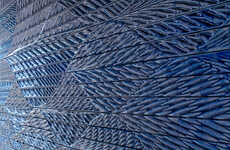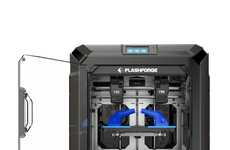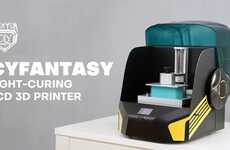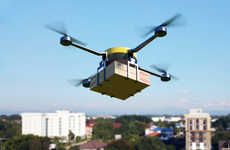
Hong Kong's Police Force Uses 3D Printing to Replicate Crime Scenes
Laura McQuarrie — March 1, 2017 — Tech
References: 3ders.org
3D printing is advantageous for quickly producing prototypes and initial mock-ups in the realm of architecture and interior design, and the Hong Kong police are creating similar structures for the purposes of recreating highly accurate crime scene models.
These built-to-scale 3D-printed crime scene replicas are being used for investigations, trials and in court to help officials understand how crimes were committed and how they can be brought to justice.
Constructing a model by hand could used to take up to a week, but with 3D printing, this task is greatly accelerated. Hong Kong's police department recently purchased 3D printers specifically for this purpose. The use of these 3D-printed crime scene models is just one of the many ways that additive manufacturing is helping to create more time for professionals to dedicate their time and expertise to other work.
These built-to-scale 3D-printed crime scene replicas are being used for investigations, trials and in court to help officials understand how crimes were committed and how they can be brought to justice.
Constructing a model by hand could used to take up to a week, but with 3D printing, this task is greatly accelerated. Hong Kong's police department recently purchased 3D printers specifically for this purpose. The use of these 3D-printed crime scene models is just one of the many ways that additive manufacturing is helping to create more time for professionals to dedicate their time and expertise to other work.
Trend Themes
1. 3D Printing in Crime Scene Replication - The use of 3D printing technology to create accurate crime scene models is disrupting the traditional methods of constructing models by hand, saving time and improving accuracy.
2. Accelerated Crime Scene Investigations - The use of 3D-printed crime scene replicas is speeding up investigations, trials, and court proceedings by providing officials with highly accurate and tangible visual aids.
3. Additive Manufacturing in Forensic Analysis - The application of additive manufacturing in creating detailed crime scene models is revolutionizing forensic analysis and improving the ability to understand and solve crimes.
Industry Implications
1. Law Enforcement and Forensics - The use of 3D printing technology in crime scene replication presents opportunities for law enforcement agencies and forensic experts to enhance their investigative capabilities.
2. 3D Printing and Additive Manufacturing - The demand for 3D printers and related services is expected to grow as more industries recognize the potential of additive manufacturing in various applications, including crime scene analysis.
3. Legal and Court Systems - The adoption of 3D-printed crime scene models in trials and courtrooms offers disruptive innovation opportunities for legal professionals, allowing for more effective presentations of evidence.
4.8
Score
Popularity
Activity
Freshness























